- Traditional metal braces can solve the most complicated cases, but are less esthetically pleasing.
- Ceramic braces are less visible but more fragile than metal braces. Self-ligating braces exert less pressure and friction.
- Lingual braces are placed behind the teeth and are virtually invisible. Invisalign treatment is often more expensive than traditional braces.
Your best smile is within reach. Use Authority Dental to find affordable dentistry services nearby.
Not sure which type of braces to choose? Here's everything you need to know.
Do I need braces?
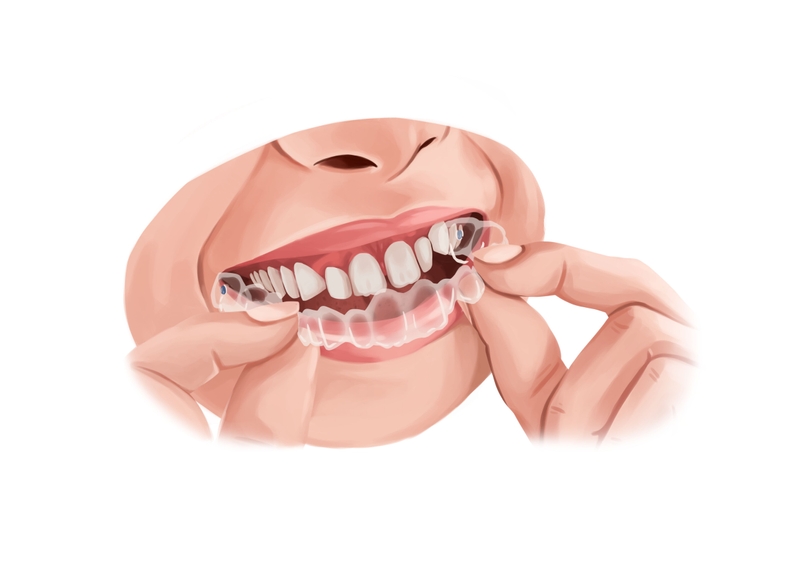
Picture by Authority Dental under CC 2.0 license
Anyone who wants to make their teeth straighter is a candidate for braces.
For some patients, however, it is sometimes medically necessary. Your orthodontist is the best person to let you know if you need braces. The following issues are indicators that aligning your teeth may not only have cosmetic benefits, but also oral health ones:
crowding,
teeth that stick out above or below the arch,
severely crooked teeth,
underbite, and
mixed bite.
When the teeth are properly aligned, no unnecessary pressure is placed on them and the jaws. This can relieve headaches. The teeth also won’t wear down so quickly, as they will all fit together when you bite and chew.
What’s more, a proper alignment means easier oral hygiene. You’ll be able to reach all the nooks and crannies of your mouth with your brush and floss.
Dentists and orthodontists recommend that straightening treatment begins as soon as possible. An orthodontic evaluation should ideally take place when the patient is around 7. Braces may take longer to work and be more expensive for adult patients.
How do braces work?
Braces use force and constant pressure on the teeth to gradually move them into the correct spots. The jawbone changes shape during this process as well. This is achieved with meticulously designed elements that work together.
Brackets
Brackets are the first thing that goes on your teeth when you get braces. They are small metal or porcelain squares cemented onto each tooth. These brackets hold the wires in place, kind of like anchors.
Arch wires
Wires push or pull teeth into alignment. Another property of theirs is tracking. The orthodontist is able to see how much movement took place during a particular period. The most common material is metal.
Ties
Once wires are placed into the brackets, ties are used to fasten them. Ties are made from rubber. If you want different braces colors, this is the part that is customized. Adult braces may have ties made from metal if more force is necessary.
Other than brackets, wires, and rubber bands, there are many more orthodontic appliances that can be added to make treatment more successful. They are only used if needed. The following elements are the most popular:
strings,
metal bands, and
Types of braces
There are different types of braces catering to different needs. Traditional metal braces tend to work the fastest, but your concern may be more to do with how you look or how much do braces cost. Your orthodontist will let you know whether your chosen type is appropriate in your case.
Metal braces
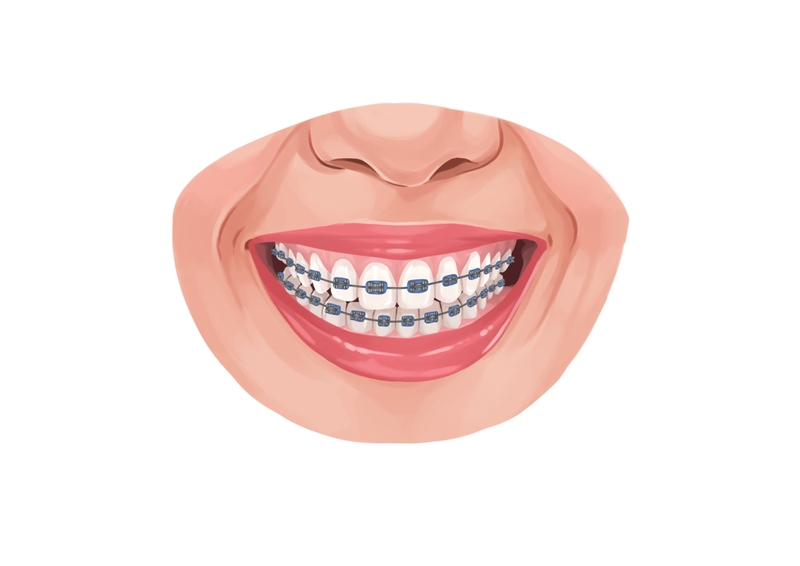
Picture by Authority Dental under CC 2.0 license
Fully metal braces are the oldest and most common option. They are universally available, so you won’t have trouble finding a dental professional who will be willing to install them. All this helps make metal braces a little more affordable than other permanent options.
The great thing about them is that they can solve the most complex cases, unlike the more esthetically pleasing types. They can also be customized with colorful elastic bands.
Ceramic braces
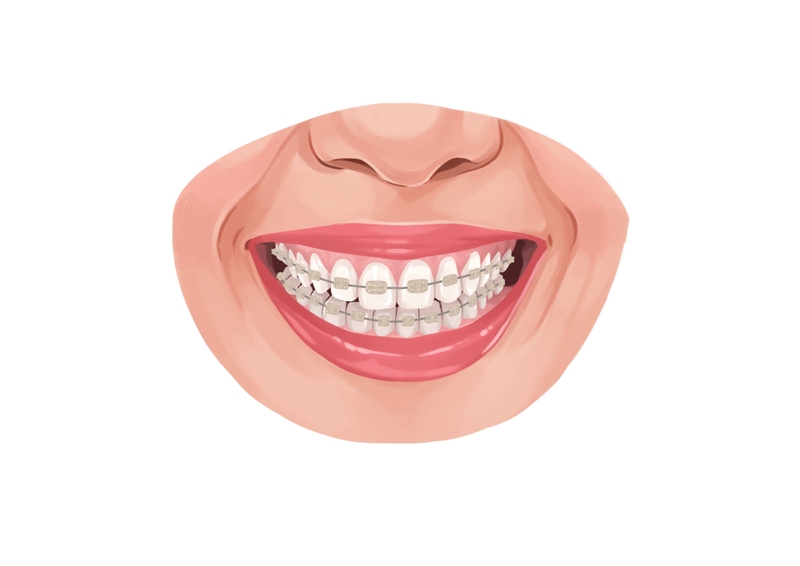
Picture by Authority Dental under CC 2.0 license
This type was designed for a more inconspicuous look. If appearance is what you’re going for, you should prepare to pay a little more. The downsides of ceramic braces are that they’re more brittle than metal ones and stain without proper care.
Some patients opt to have the top arch aligned with ceramic and the bottom with metal. Others claim that ceramic brackets are bigger and stick out more. It’s all down to personal preference. And your budget.
Self-ligating braces
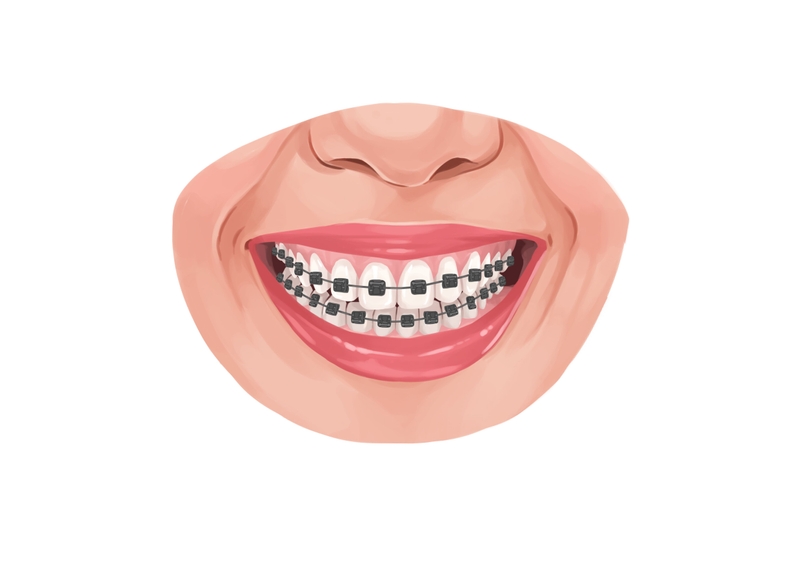
Picture by Authority Dental under CC 2.0 license
Self-ligating braces are slightly more expensive than the bare-bones metal ones, but they come with a lot of advantages. First of all, less pressure and friction are placed on the teeth, which makes the system more comfortable.
Secondly, since they adapt to the changes in your mouth, the process is considerably faster. You will not need to visit the orthodontist for adjustments as often, either.
The most popular representative of self-ligating braces is the Damon System. Initially, they can be expensive, but the costs you save visiting the orthodontist less regularly makes them affordable still.
Without elastomeric rings they are also easier to keep clean.
Lingual braces
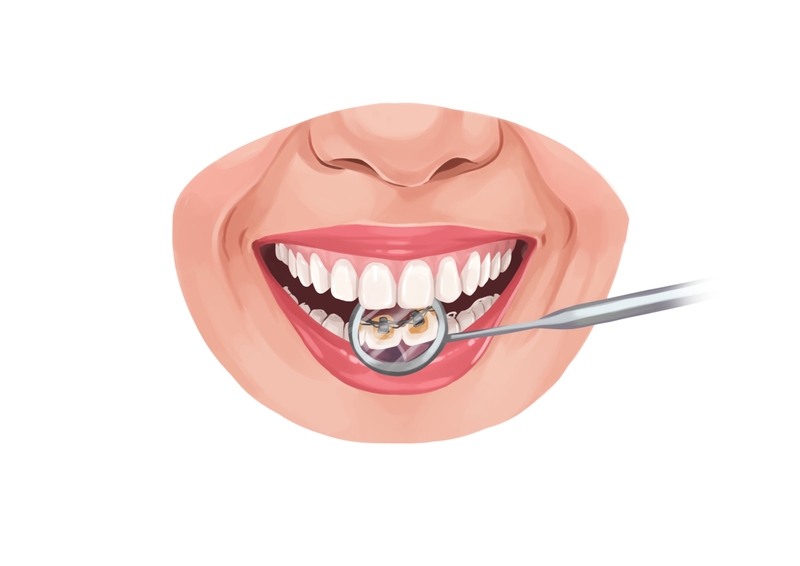
Picture by Authority Dental under CC 2.0 license
Those who desperately want to opt for braces that won’t make them look like eternal teenagers can choose lingual ones. They are installed behind the teeth and this makes them practically unnoticeable.
The problem is that they are hard to install and even harder to adjust. You should take into consideration that there are few specialists who take on such cases. They will definitely charge accordingly.
What’s more, they are unsuitable for those with small teeth. These braces can also cause temporary speech and tongue problems. On top of that, some patients claim lingual braces were quoted as twice as expensive in comparison with regular metal ones.
Clear aligners
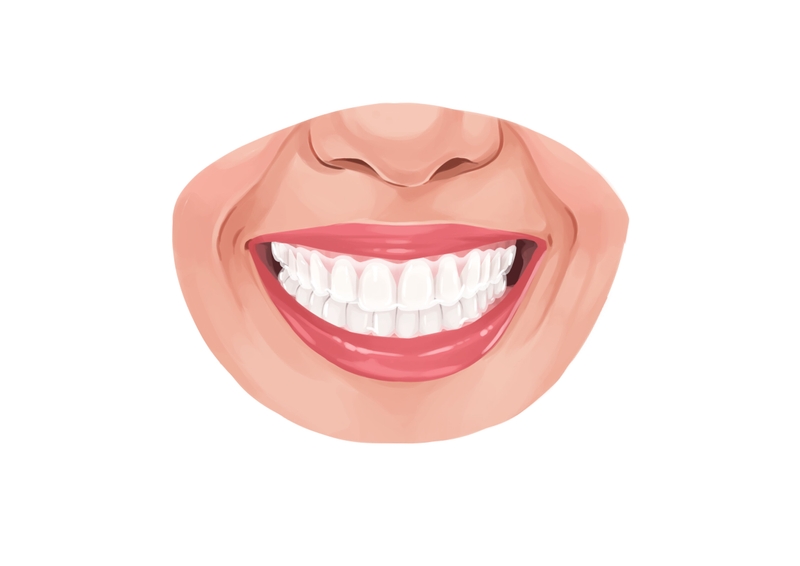
Picture by Authority Dental under CC 2.0 license
Invisalign treatment, the most popular type of invisible braces, can turn out to be quite costly. It is often more expensive than conventional braces. This shouldn’t be surprising, since you are paying for the recognizability of the brand, invisibility of treatment, and specialist support.

Some dentists and orthodontists offer their own custom aligners. They are made right at the office, so the trays can be delivered to you very fast.
Remote tooth alignment
Clear aligner systems are available for remote treatment. Some brands allow patients to come in for an initial consultation, but you can also send in an impression and conduct the whole thing from home. You can contact a professional at any time, but you are in charge of the process.
What is the braces process like?
Braces are a multi-step process. It may not look the same for everyone. The time it takes to complete treatment is also very different between patients and depends on:
the severity of the issues,
how much room there is in your mouth,
how far the teeth have to move,
the overall health of your teeth, gums and bone, and
how well you follow instructions.
Your orthodontist will be able to give you a rough timeline when fashioning your treatment plan.
Initial consultation
The first step is to come in for a consultation. The orthodontist will inspect the mouth to see what changes are needed. You can also voice your own concerns or goals you would like to achieve when it comes to the appearance of your smile.
X-rays, digital scans, impressions, and digital photos (including full-face ones) are the most common components of this visit. Your medical history will be reviewed as well. Based on this information, the orthodontist can come up with a treatment plan.
Preparatory procedures
You may need some dental work done before your orthodontic process starts. Many patients need to extract some teeth, especially if they are impacted. Wisdom teeth are commonly pulled, especially in the case of crowding.
You may also need a professional teeth cleaning. Braces will be in place for a long time, maybe even a few years. They cannot sit on bacteria or remaining food particles.
Installing braces
You may need to wear elastic spaces for 1-2 weeks before braces are mounted to make room for metal bands around your molars.
The process begins with cementing brackets onto each of your teeth. A metal wire is placed inside them and secured with ties. You will be able to choose the color.
Alignment, adjustments, and tightening visits
Since braces are not removable, you’ll be able to follow your everyday routine. These tips may help you avoid unnecessary discomfort and aid the process:
brush after every meal,
floss between the teeth and wires,
inspect your mouth in the mirror everyday for leftover food debris,
use a fluoride rinse to keep your teeth strong, and
avoid sticky and crunchy foods.
Hygiene is crucial during alignment treatment. Any decay or infection can make it longer and more difficult both for you and your orthodontist. Avoid sweet and starchy food, which may lead to these issues.
You’ll want to follow a soft food diet as well, as your teeth might feel sore and tender. This is more prominent at the beginning and after adjustment visits. The appliances may also feel large and bulky at first, but you’ll get used to this quickly.
You will visit your orthodontist every 4-8 weeks to check how you’re doing and to tighten the wires for the next phase of treatment. Additional appliances may also be added to your braces before and after key stages of treatment.
Removing braces
The removal visit will look a lot like the fitting one, except in reverse. Appliances are the first to go. Then wires will be released from the brackets. Lastly, the orthodontist will drill away the brackets and polish the teeth to make sure no dental cement is left.
X-rays and bite impressions are often taken again to assess the effect. If your wisdom teeth started to come in during treatment, they are likely to be extracted at this point.
Retaining your smile
The last step of any orthodontic treatment is wearing a retainer. Those may be fixed or removable. They help keep your teeth in the new positions. If you fail to wear it, dentition will revert back.
Most commonly, patients have to wear a retainer all the time for the first 6 months. After that, you’ll only have to put it in at night.
FAQ
What is a good age to get braces?
How long do braces take?
What can't you eat with braces?
How to floss with braces?
How to whiten teeth with braces?
When were braces invented?
Are there any alternatives to braces?
Christopher Riolo, DDS
More often than not, lingual braces are just as effective as the traditional option if you are in the hands of an experienced lingual orthodontist. Most speech issues also disappear after the first month of wear.